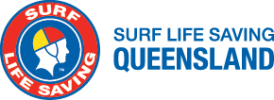LIMSOC IS TO BE THE PRIMARY OPTION FOR PATROL SIGN ON AND SIGN OFF, PAPER SIGN ON SHEETS ARE TO ONLY BE USED AS A BACK UP
PURPOSE
To outline the basic process of a volunteer patrol using LIMSOC to sign on.
PROCEDURE
When signing on using LIMSOC, you will need to provide the following information:
- Location – Beach Name/Name of Lifesaving Club
- Patrol Strength
a) Full Patrol – Your patrol meets your club’s requirements as per your Lifesaving Services Contract.
B) Partial Patrol – Your patrol does not meet your club’s patrol requirements as per your Lifesaving Services Contract.
Keep Surfcom updated as more patrol members arrive, or your patrol becomes a ‘full patrol’. - Number of Patrollers
- Beach Status
a) Beach Open – Your beach is safe for swimming and open to the public.
b) Beach Closed – Your beach has been deemed too dangerous for the public - Powercraft Status
a) IRB Operational – An IRB is at the water’s edge and ready for use.
b) IRB On Standby – The IRB is at the club house, ready for use and can be brought to the water’s edge for use quickly.
c) IRB Not Operational – The reason the IRB is not able to be used (i.e., the patrol does not have an IRB driver and crew on patrol). - Primary Contact
a) Radio – What repeater channel is your patrol using. (preferred)
b) Landline – Where radio communication is not available. - Secondary Contact
a) Mobile Number – It is important to include a mobile number on patrol, this acts as a secondary communication pathway.
b) Landline – Where radio communication is not available. - Notes – Any notes about the upcoming patrol
TRAINING
All members undergoing an SLSQ award, induction or water based/beach training must be signing on via LIMSOC or Surfcom. The information that is required to sign on training is: Location, Type of Training, Number of Trainees and Trainers and Estimated Completion Time.



Post your comment on this topic.